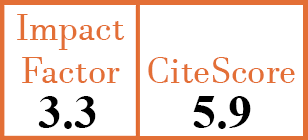One year in review
Behçet's syndrome: one year in review 2024
G. Hatemi1, E. Seyahi2, I. Fresko3, R. Talarico4, D. Uçar5, V. Hamuryudan6
- Division of Rheumatology, Department of Internal Medicine, Istanbul University-Cerrahpasa, School of Medicine, and Behçet’s Disease Research Centre, Istanbul University-Cerrahpasa, Istanbul, Turkey.
- Division of Rheumatology, Department of Internal Medicine, Istanbul University-Cerrahpasa, School of Medicine, and Behçet’s Disease Research Centre, Istanbul University-Cerrahpasa, Istanbul, Turkey.
- Division of Rheumatology, Department of Internal Medicine, Istanbul University-Cerrahpasa, School of Medicine, and Behçet’s Disease Research Centre, Istanbul University-Cerrahpasa, Istanbul, Turkey.
- Rheumatology Unit, Department of Clinical and Experimental Medicine, University of Pisa, Italy.
- Division of Ophthalmology, Istanbul University-Cerrahpasa, School of Medicine, and Behçet’s Disease Research Centre, Istanbul University-Cerrahpasa, Istanbul, Turkey.
- Division of Rheumatology, Department of Internal Medicine, Istanbul University-Cerrahpasa, School of Medicine, and Behçet’s Disease Research Centre, Istanbul University-Cerrahpasa, Istanbul, Turkey. vhamuryudan@yahoo.com
CER18164
2024 Vol.42, N°10
PI 1999, PF 2007
One year in review
Free to view
(click on article PDF icon to read the article)
PMID: 39404479 [PubMed]
Received: 15/09/2024
Accepted : 24/09/2024
In Press: 15/10/2024
Published: 15/10/2024
Abstract
The aim of this review is to provide a critical summary of studies published during 2023 that contribute to our understanding of Behçet’s syndrome. An increase in the incidence of BS was reported in Northern Spain after 2014. Studies on patient perspectives showed the impact of Behçet’s syndrome on quality of life, daily activities, education, work, and relationships. Differences in genetics among Behçet’s syndrome patients with different types of organ involvement were reported and an association between HLA-B/MICA and SLCO4A1 polymorphisms and eye involvement and between DDX60L polymorphisms and nervous system involvement were observed. It was suggested that Integrin α9β1 plays a crucial role in the neutrophil-mediated inflammatory pathways underlying this syndrome and the dysfunction of the PDL1/PD-1 pathway may be associated with the hyperactivity of the Th-1/Th-17 axis. Vein wall thickness seems to be increased in patients with Behçet’s syndrome, but its pathogenetic and clinical implications are not clear. There is growing evidence regarding the efficacy of TNF inhibitors in different types of organ involvement. A number of small case series point out to the potential role of TCZ and JAK inhibitors.


